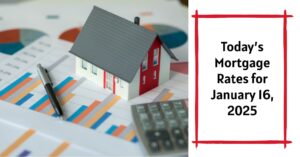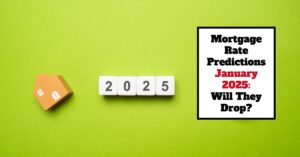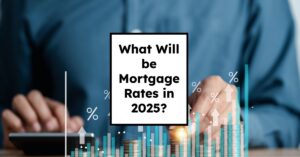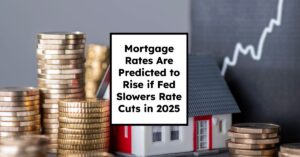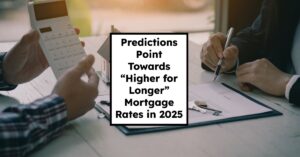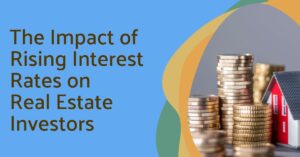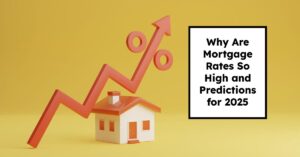Ever feel like the housing market is a giant puzzle with pieces that never quite fit? Well, the Free Market Mortgage Act of 2023 is a proposed piece of legislation aiming to reshape that puzzle, specifically by impacting how mortgages are made and potentially making it easier for individuals to buy homes.
It’s essentially a bid to reduce government control and introduce more competition into the mortgage market. This could lead to big changes, but it also brings up some crucial questions. As someone who’s followed housing trends for years, I've seen firsthand how policy changes can drastically affect people's lives, and this Act is no different, making it a topic worth digging into.
Understanding the Free Market Mortgage Act of 2023: A Deep Dive
What's the Fuss About? Why a “Free Market” Approach?
The housing market in the US is heavily influenced by government-sponsored entities like Fannie Mae and Freddie Mac. These entities buy mortgages from lenders, which then allows those lenders to give out more mortgages. This system, while designed to encourage homeownership, can create a situation where the government has significant sway over who gets a mortgage and what kind of mortgages are offered.
The Free Market Mortgage Act of 2023 aims to dial back this government involvement. The Act's core idea is that a more competitive market, free from these kinds of government-backed entities, would ultimately lead to better mortgage products, lower rates, and potentially more opportunities for people to buy homes. The thinking here is that competition breeds innovation, forcing lenders to offer more attractive deals to win your business. It's like any other free market: businesses compete for customers by offering the best value.
However, the reality is never quite that straightforward. While the idea of a free market sounds appealing, I’ve learned that such markets can also be unpredictable, which is something we need to unpack.
Key Provisions of the Proposed Act
Let's delve deeper into the specifics. What exactly does the Free Market Mortgage Act propose? While the exact language may vary, here are the main components we've seen discussed and debated:
- Reducing Government Influence: The Act targets the roles of Fannie Mae and Freddie Mac, aiming to either phase them out or significantly reduce their influence on the mortgage market. This is a major shift, as they’ve been a cornerstone of our housing system for decades.
- Increased Private Sector Involvement: The Act envisions that private companies and investors would take on a larger role in providing mortgage-backed securities. This is supposed to drive the market toward more innovative financial instruments and products.
- Risk Management: A big part of the Act revolves around the transfer of risk from the government to the private sector. The idea is that private investors would be more careful about underwriting mortgages, leading to a more stable system.
- Standardization and Transparency: While the Act aims for a more free market, there would likely be a focus on more standardization and transparency in how mortgages are packaged and sold. This might mean more clear information for consumers about the risks involved in their mortgages.
- Potential Impact on Mortgage Rates: One of the most debated parts is how this Act might impact mortgage rates. While proponents argue that increased competition would push rates down, there are also concerns that a less regulated market could result in higher rates and less access to credit for some individuals.
| Feature | Government-Backed System | Free Market Act Proposal |
|---|---|---|
| Primary Entities | Fannie Mae, Freddie Mac, Ginnie Mae | Private Lenders, Investors |
| Risk Management | Government guarantees | Risk transfer to private investors |
| Competition | Limited – backed by governmental entities | Increased competitive landscape between lenders |
| Standardization | Standardized guidelines | Further standardization and transparency in mortgage practices |
| Goal | Promote homeownership, manage overall economic activity | Increase innovation, reduce governmental control |
Potential Benefits: A Sunny Outlook?
Now, let’s talk about the possible positives. Advocates for the Free Market Mortgage Act paint a picture of a more efficient and consumer-friendly market, arguing it could result in several benefits:
- More Competition: I see real potential for competition among lenders to lead to better terms for borrowers. Think lower interest rates, reduced fees, and a wider variety of mortgage products. For those of us who've felt restricted by the limited options available, this could be a game-changer.
- Increased Innovation: A free market environment often spurs innovation. Lenders could introduce new and tailored mortgage products to meet the specific needs of different groups of people, offering flexible loan options.
- Reduced Taxpayer Burden: If the risk of mortgage defaults shifts away from government guarantees, taxpayers would no longer be on the hook for potential losses. This is a point that’s frequently touted by proponents of the Act.
Potential Challenges: The Storm Clouds
Of course, every big idea comes with potential downsides, and the Free Market Mortgage Act of 2023 is no exception. There are some significant challenges we need to address:
- Increased Risk: One of the biggest concerns is that removing government backing could make the system less stable. With the private sector taking on more risk, there’s the possibility of more volatile markets. History has shown us time and again that a lack of oversight in financial markets can lead to crises.
- Reduced Access to Credit: Lenders, in a more competitive and risk-averse environment, might be less willing to extend mortgages to individuals with less than perfect credit or to people who are first time buyers. This could disproportionately affect minority communities and lower-income individuals.
- Higher Interest Rates: The push for more competition and private investment might unintentionally lead to higher mortgage rates, which could make home buying less affordable. It’s not as simple as saying competition automatically equals lower costs.
- The Risk of Predatory Lending: Without proper oversight, a completely free market for mortgages could invite predatory lenders to take advantage of unsuspecting consumers through misleading and unfair loan terms.
- Transition Challenges: Moving from a government-backed system to a completely free market would involve a complicated transition with several chances for things to go wrong. We need to be ready for potential disruptions to the existing market.
My Thoughts and Expertise: A Personal Take
Having seen how shifts in policy can dramatically affect real people, I believe the Free Market Mortgage Act of 2023 needs to be approached with a blend of optimism and caution. On one hand, the prospect of a more dynamic, competitive mortgage market is appealing, because increased competition could drive innovation and give consumers more options. But, a completely free market, without adequate regulations in place, can lead to instability and leave vulnerable populations at risk. The delicate balance between market efficiency and social responsibility is what we should focus on.
I personally believe that transitioning to a free market should not be an “all at once” endeavor. It should be a phased process that is carefully planned with necessary safeguards in place. These safeguards should also ensure that first time buyers, minority groups, and low-income individuals are not left behind. Also, it would be prudent to incorporate mechanisms that monitor market volatility and ensure consumer protection. Transparency in mortgage terms and easy to understand disclosures would be essential.
Conclusion: Navigating the Complexities
The Free Market Mortgage Act of 2023 is not just about numbers and economics; it’s about people and their dreams of owning a home. It’s a complex issue that demands careful consideration of both the opportunities and potential risks. We can't just leap headfirst into a new system without truly understanding the consequences.
As we move forward, I believe, that we need to have open, honest discussions about what we’re willing to risk to achieve a more free market. The ideal outcome would be a system that is both efficient and fair, serving both the economy and the individuals trying to find their place in the housing market. It’s a balancing act, and getting it right is essential for the future stability and accessibility of housing.
Work with Norada in 2025, Your Trusted Source for
Turnkey Real Estate Investing
Discover high-quality, ready-to-rent properties designed to deliver consistent returns.
Contact us today to expand your real estate portfolio with confidence.
Contact our investment counselors (No Obligation):
(800) 611-3060

